The Japanese do not read English food blogs or restaurant reviews in Western newspapers. Most have never seen Jiro Dreams of Sushi. When the 2018 Michelin Guide awarded 234 stars to restaurants around Tokyo—more than any other city on earth—locals appreciated the recognition but doubted the foreign publication’s credibility, skeptical that anyone but the Japanese can understand Japanese food.
After all, UNESCO granted traditional Japanese cuisine, washoku, Intangible Cultural Heritage status in 1993, which only seemed to validate that sense of differentiation. That recognition is central to the marketing of washoku as a natural, timeless, and perhaps inscrutable part of the country’s identity.
But here’s the truth: Today’s diet in Tokyo is essentially Westernized Japanese food, and it is far different from what it was 150, 100, or even 50 years ago. Japanese breakfast is a coffee and a piece of bread or a smoothie from the juice spot near the station on the way to work. We eat curries and noodles for lunch, and after-work drinks often mean German-style beer accompanied by cheese and meat. This interplay of foreign and domestic, timeless and trendy, is at the heart of Tokyo’s endless appetites. Here are eight dishes that chart the path from the small village of Edo to the megacity Tokyo as you’ll find it today.
Nigiri-zushi at Matsunozushi

Entering Matsunozushi is intimidating, no matter how many times I duck through the noren (doorway curtains) to open the sliding doors. There is a heavy formality to the space: the large wood-carved signage, the stepping stones through the garden, the two-story building through which I can see kimono-clad women serving drinks, and the stone-faced sushi chef. He sees me, but he is definitely not smiling—am I late again?
Luckily for me, Yoshi Tezuka—the fourth-generation son, successor, and a friend of mine—is smiling. He beckons me through another set of sliding doors and inside to a counter seat. I bow my head and say “Hello. It’s been a while. Thank you for having me today” to Taisho, the head chef. His hands constantly moving between rice and fish, he manages a half smile, mostly with his eyes.
Matsunozushi has been serving sushi for more than 100 years. Tezuka’s great-grandfather sold nigiri-zushi from a street cart during the Meiji Period. The origins of this type of sushi are distinctly Edo style: The earliest defining rule of nigiri-zushi is that it has to use fresh fish from Tokyo Bay.
Since then, Matsunozushi has remained loyal to edomae nigiri sushi through the generations. As the business evolved from a street cart to a permanent location in Omori Kaigan in southwest Tokyo, the nigiri-zushi—once eaten as a quick fast-food snack—has evolved into a sit-down meal complete with fresh seasonal fish and other ingredients.
Seirou soba at Yabu Soba
Soba, another dish from the Edo Period, finds full expression at Yabu Soba, which first opened for business in 1880. Rebuilt after a 2014 fire, the Tokyo institution specializes in seirou soba—thin noodles made from a ratio of 10 parts buckwheat flour to one part wheat flour. It’s a simple offering: The noodles are chilled after cooking, to maintain firmness, and then served with broth for dipping. But within that framework come a hundred subtle, seasonal interpretations. In winter it’s kaki soba with perfectly fat oysters and seaweed in broth. Duck, served rare and sliced thin and placed elegantly on its bed of noodles, is another take on this austere classic.
Kakiage-don at Tenshige
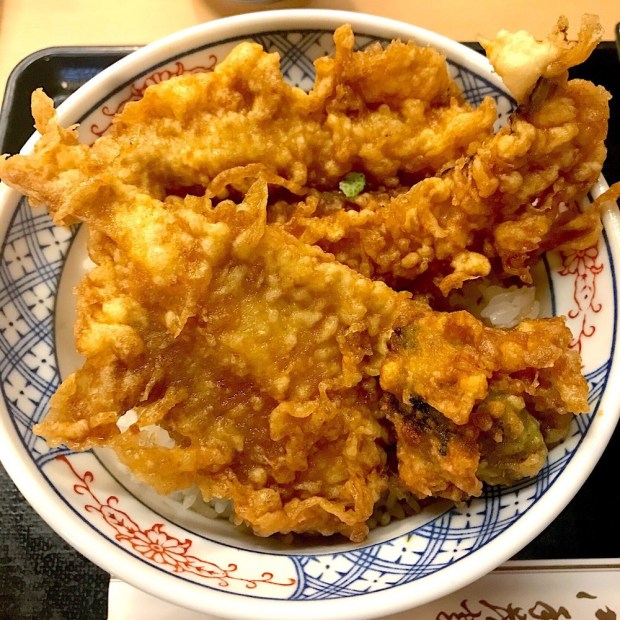
When the Portuguese first arrived in Japan, the locals referred to them as Nanban (southern barbarians). This blanket term generalized anyone who had dark hair and complexion in comparison with the fair English or Dutch, who were called Kōmō (red hair). Much of what we consider to be Japanese food today derives from early interactions with these Portuguese, Spanish, Dutch, and English traders and missionaries, who came through tightly controlled ports such as Nagasaki during the centuries Japan spent in isolation from the rest of the world.
The Portuguese ate battered, fried vegetables called peixinhos da horta during Tempora, the Latin word for Lent. Tempora was adopted as tempura, the last of the three major culinary delights from the Edo Period.
Tenshige in Akasaka opened for business in 1964, serving the popular kakiage-don (mixed shellfish and vegetable tempura on rice). The light crunch of the tempura was a perfect complement to the fluffiness of the batter, finished with dark broth. This dish brought salarymen and politicians to the small counter-style seating for lunch.
We are fortunate that Tenshige is still in existence today. In Japan’s patriarchal society, if there is no son to continue the business when an owner dies, the expectation is that the business simply folds. But Sayuri Takabatake rebelled against that tradition, taking over the restaurant from her father when he died in 1990. Ask her for a business card and she’ll hand you a card with her father’s name, saying that it is still her father’s restaurant and that even today her father is standing next to her as she works.
Tonkatsu at Tonki
Unlike tempura from the Portuguese, tonkatsu finds its origins in Italy, specifically in Milan. The cotoletta alla milanese (veal Milanese) is considered by many to be the original fried cutlet, inspiring fried cutlets across Europe and beyond, from Wiener schnitzel to American chicken-fried steak to Japanese tonkatsu.
In the past Japanese Buddhists promoted plant-based eating, often instituting bans on eating meat both for socioreligious reasons and to discourage inefficient use of land to grow livestock. It wasn’t until the Meiji Period that meat was normalized, as Emperor Meiji used meat consumption as a high-profile way of integrating Western culture into a modernizing Japan.
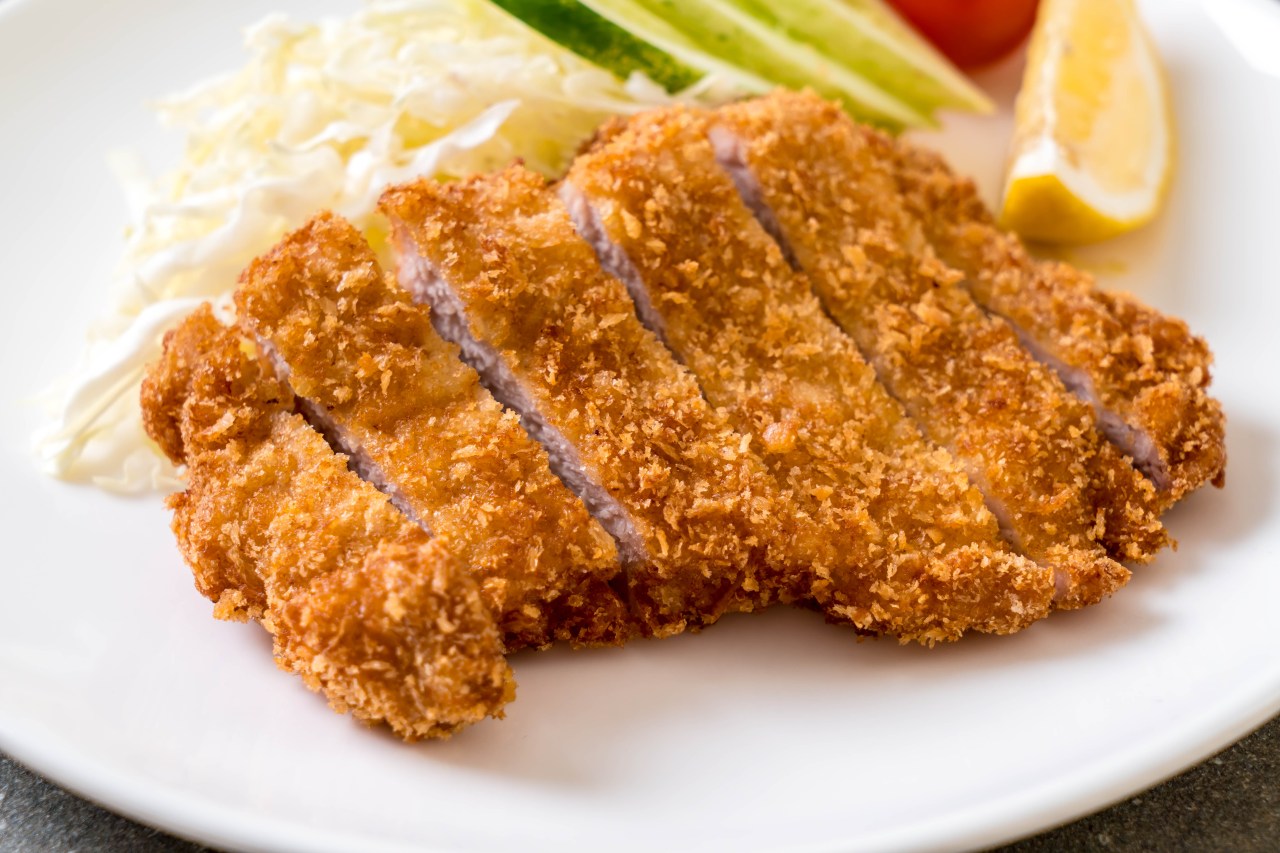
Thick cuts of pork are used for the tonkatsu, breaded and deep-fried, served with karashi mustard and a mountain of shredded cabbage. Tonki in Meguro, founded in 1939, is like watching a well-rehearsed orchestra. Each man has an individual role, but the final dish is a collective effort.
Hire (lean) or rōsu (fatty)? A waiter with an expectant face and a pen on his clipboard takes your order while you’re lining up for a seat. Those are really the only two legitimate options on the menu, as the third option, the skewered kushi-katsu, is an inferior cut. The tonkatsu here is served as a teishoku set—a meal in balance, served with rice, tonjiru soup, and pickles.
Curry at Yogoro
As the Meiji emperor promoted Western cuisine in Tokyo, it became known as yōshoku, no matter which country it came from. These dishes—omurice, hayashi rice, spaghetti napolitan, croquettes, fried-chicken nanban, hamburg steak, doria gratin, and pilafs—were dishes influenced by Western plates. The names often stayed intact (i.e., croquettes became korokke, omurice is a mashup of omelette and rice), but the dishes evolved independently in Japan.
Curry was in the same boat. The colonial British navy mixed Indian curry powder with their stews and brought this thick, chunky curry to Japanese ports. By the 1950s the Japanese had tweaked the curry recipe to make solid roux for home cooking; and by the 1960s the Glico food manufacturer began selling mass-produced roux in the shape and form we use today—breakable blocks, inspired by bars of chocolate.
Curry is something of a national flavor in Japan: not just served with rice, but also thinned with broth and prepared with noodles like curry udon; baked inside fried bread to make curry-pan; eaten with pork as katsu curry; or found in any convenience store as curry-flavored rice crackers, potato chips, and snacks.
Today Tokyo prefers spice curry, rejecting the premade roux of past decades. Spice curry at restaurants like Yogoro in Jingūmae is made instead from a combination of spices and offers a high-quality red-tomato or green-spinach curry.
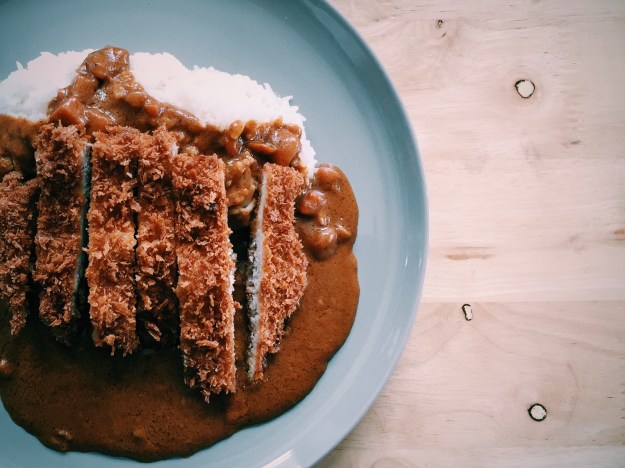
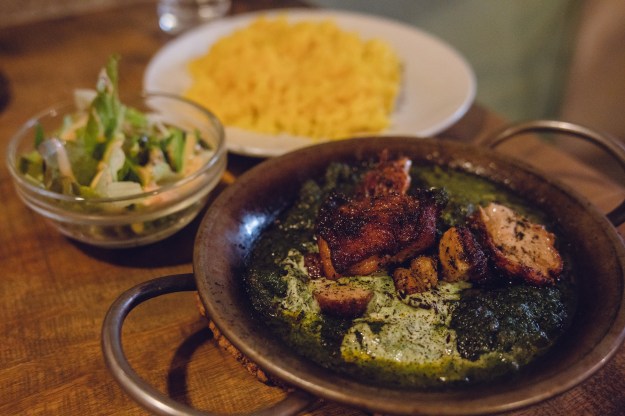
Shoyu ramen at Chorori
After the Japanese defeat in 1945, the U.S. provided (somewhat self-serving) economic aid in the form of American food staples like wheat and soybeans, which prompted a gradual shift from rice to bread consumption throughout Japan. The postwar economic revolution during the ’50s brought supermarkets to cities and refrigerators and gas inside homes. As the middle-class expanded, fast food chains and family restaurants (diners) popped up to offer dining options outside the home.
Rice consumption was down by half, but meat, eggs, milk and dairy, animal fats and oil were up. The recent rise of ramen—noodles made from wheat flour—in the United States completes the circle in a sense. What was once exported to Japan has now come back as the latest Japanese food trend.
Chorori, a small shop in Ebisu, offers an old-school take on Tokyo ramen. Get the shoyu ramen, a side of cha-han (fried rice), and a cold beer and live the history.
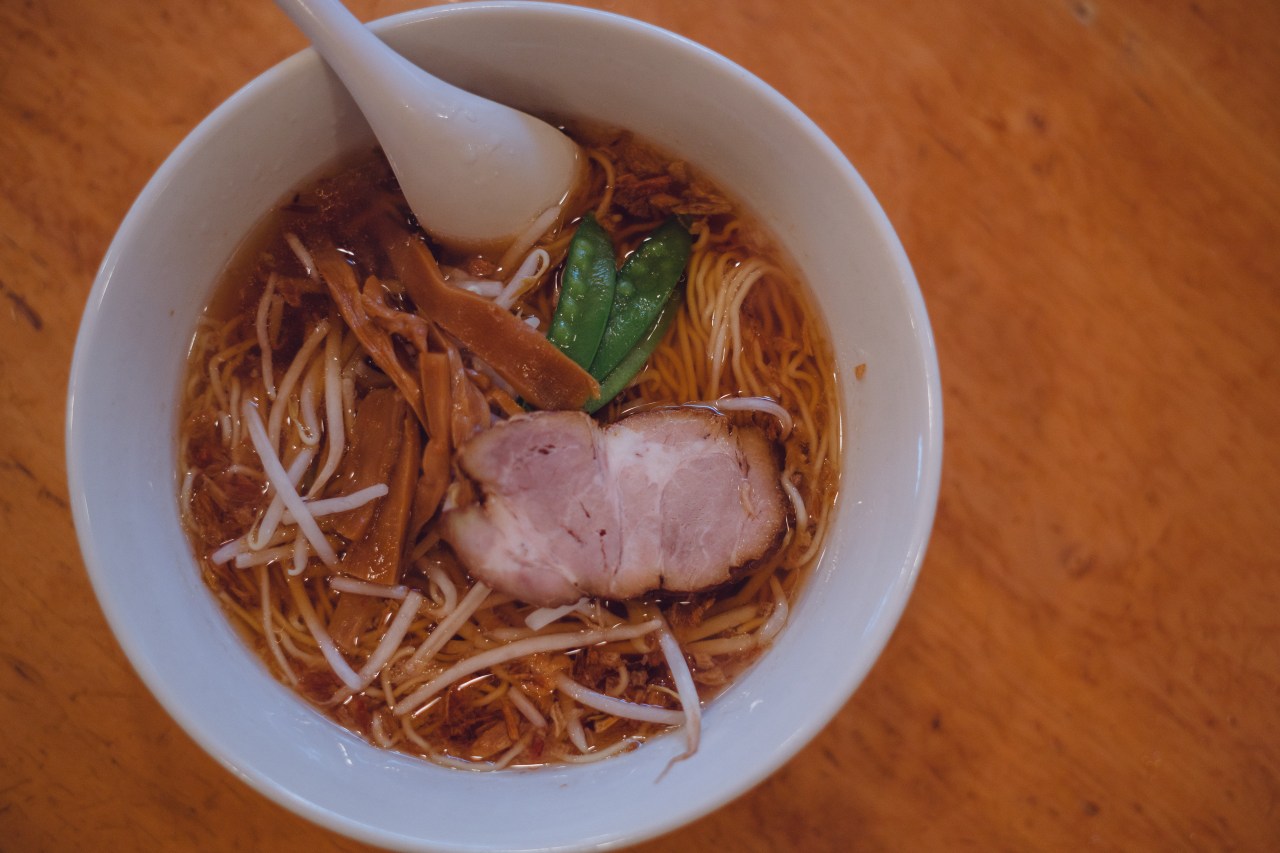
Bread of the forest at Les Creations de Narisawa
In 2003 popular Prime Minister Junichiro Koizumi was in office, and the economy was rebounding (slightly) from the stock crash of the early ’90s.
That was the year that chef Yoshihiro Narisawa, fresh from Switzerland, France, and Italy, returned to open Les Créations de Narisawa in Minami-Aoyama. France had always been a polestar for Japanese chefs and eaters, but it took Narisawa—who left Japan at 19 to train with chefs Paul Bocuse and Joël Robuchon—to assimilate how modern French cooking was evolving. He returned to Tokyo not to serve French cuisine, but to serve French-inspired Japanese cuisine.
The Bread of the Forest—bread that is prepared, fermented, and baked at the table—is a classic Narisawa dish. Instead of the gilded, gourmet approach of the precrash bubble, it’s luxury as modernism, as seasonality, as sustainability.
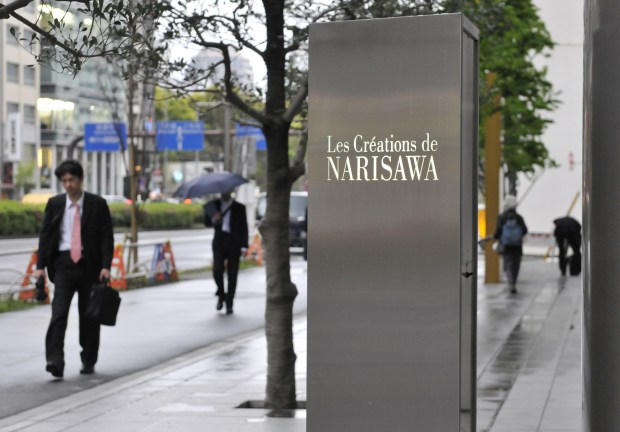
What-a-Melon at Dominique Ansel Bakery Japan
It’s no surprise that Dominique Ansel, inventor of the Cronut—the pastry that went viral—headed to Tokyo to open his first international location. Tokyo has a sweet tooth, and fanatic queuing for food was a civic pastime even before the rise of social media: crêpes out of street carts in Harajuku, cakes and macarons from Paris, fluffy pancakes from Hawaii, bubble tea from Taiwan, juices and açai bowls from Los Angeles. It was only a matter of time before Tokyo met the incredibly photogenic sweets from New York City.
The French pastry chef shows that he gets Tokyo. He gets what kawaii looks like in this specific context (a trendy New York bakery in Omotesandō) and moment in time (now). He gets how important craft, design, and seasonality is to the Japanese and that subtle cultural cues bring the product closer to the heart. Most important, he presents his creations as singular self-contained visuals. The pastries have short, catchy names. Ansel understands that food, like fashion, can be hyped with limited-edition quantities and limited-time offers and deliveries that drop on certain dates. Ansel also gets what Tokyo can do for him. Unlike food blogs or tweets, where language is a barrier with the world, visual platforms such as Instagram enable Tokyo to claim its position and status as global trendsetter for food. More and more, social media dictates food trends in Tokyo, and trends that go viral from Tokyo have global influence.
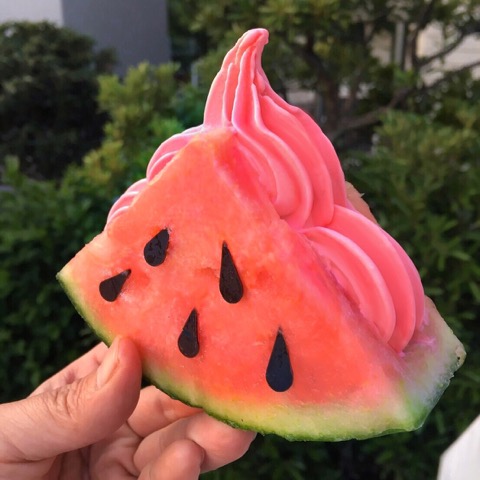
This proved true for What-a-Melon Soft Serve, launched to celebrate the Tokyo shop’s second anniversary in 2017. It was the perfect summer dish: a slice of watermelon filled with Ansel’s watermelon soft serve. Cartoonish chocolate seeds stuck to the outside of the actual fruit for that additional kawaii factor, and each serving came with a tiny retro container of sea salt to sprinkle on top.
Ansel’s partner, Amy Ma, says that going viral is “not important at all. Chefs that have a goal to ‘go viral’ are starting off with the wrong approach. It needs to be a good product—taste delicious, look nice, and have a point of view. If it is, it’ll take care of itself.”
Luckily for the team, What-a-Melon was so popular on social media that Ansel decided to bring the dish to New York for Fourth of July weekend only. Globalization is here, and I hope it stays sweet.
Originally published on Roads & Kingdoms on January 7, 2018.